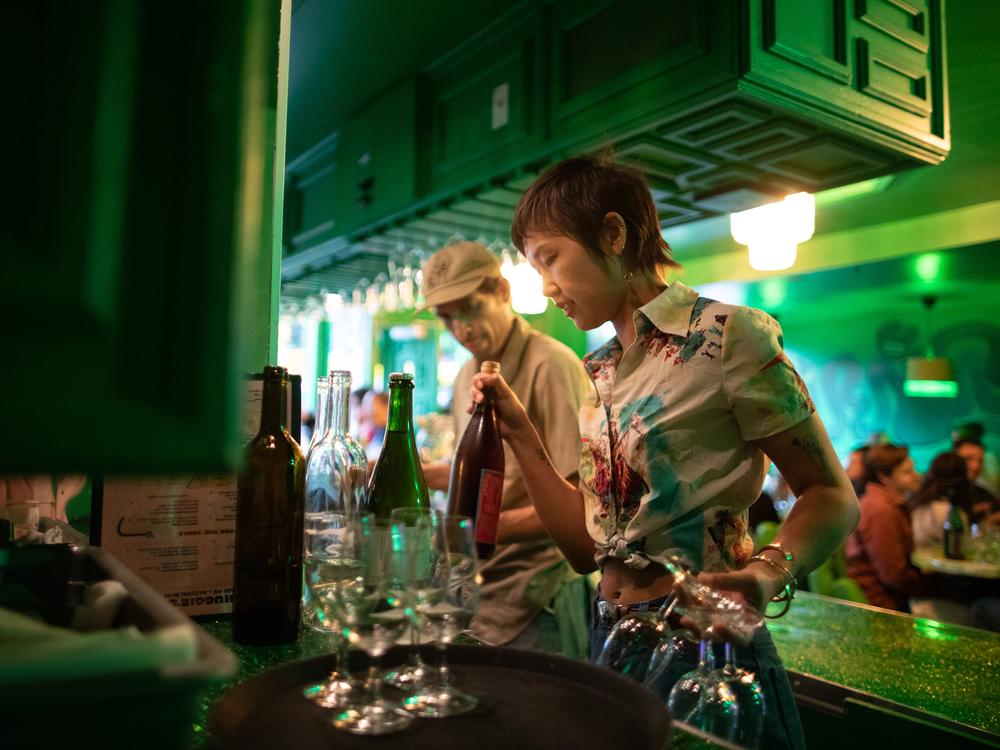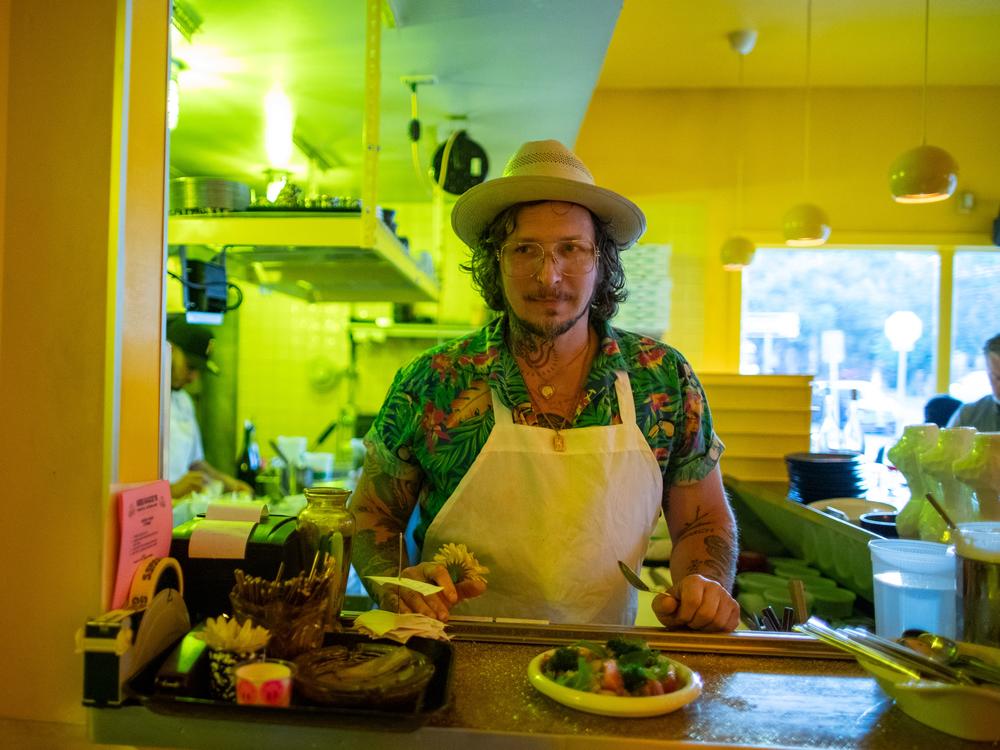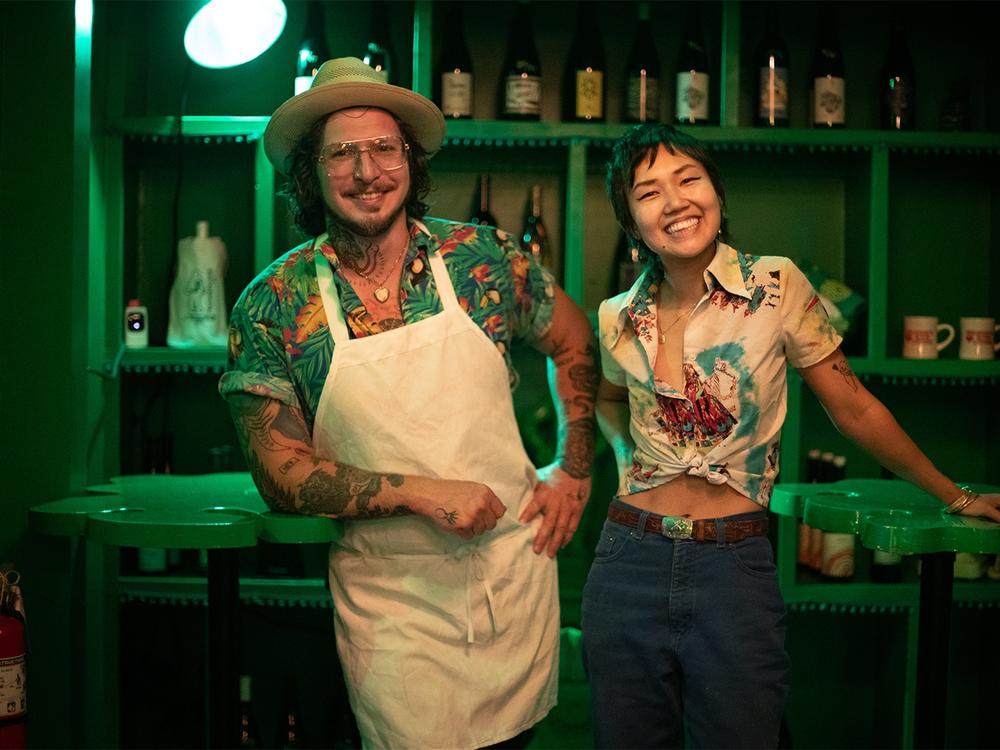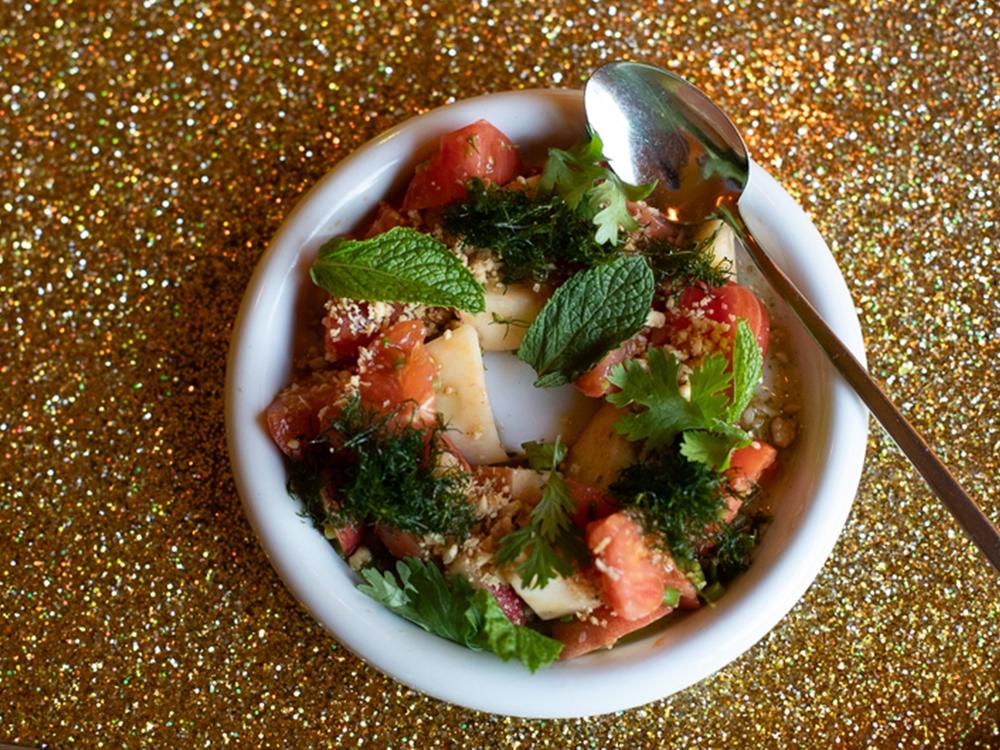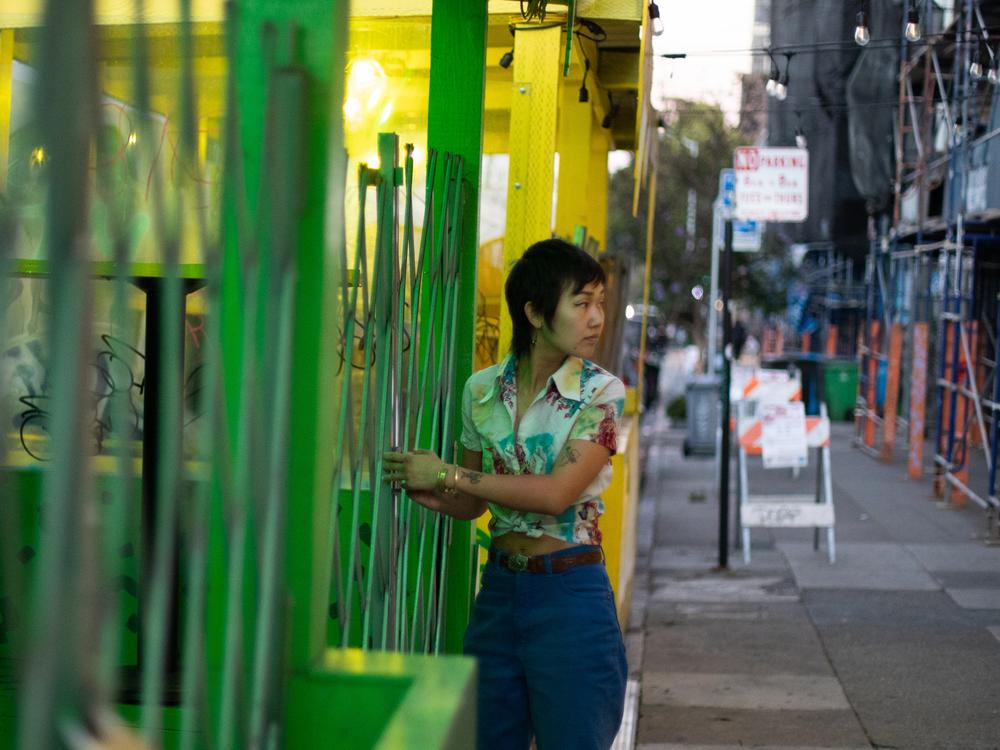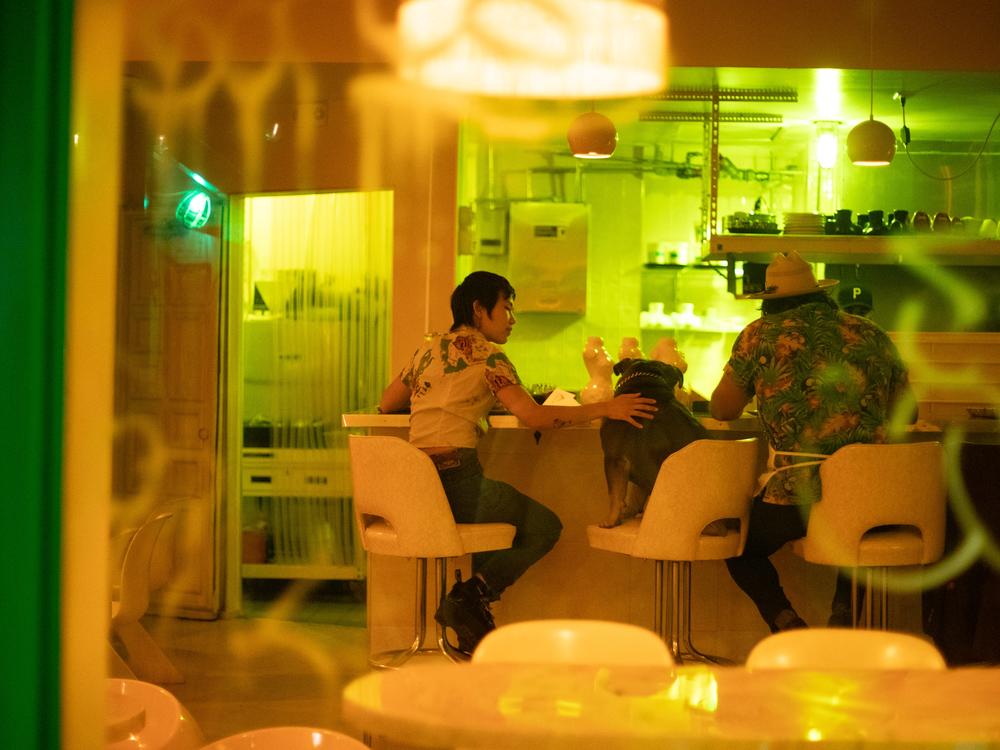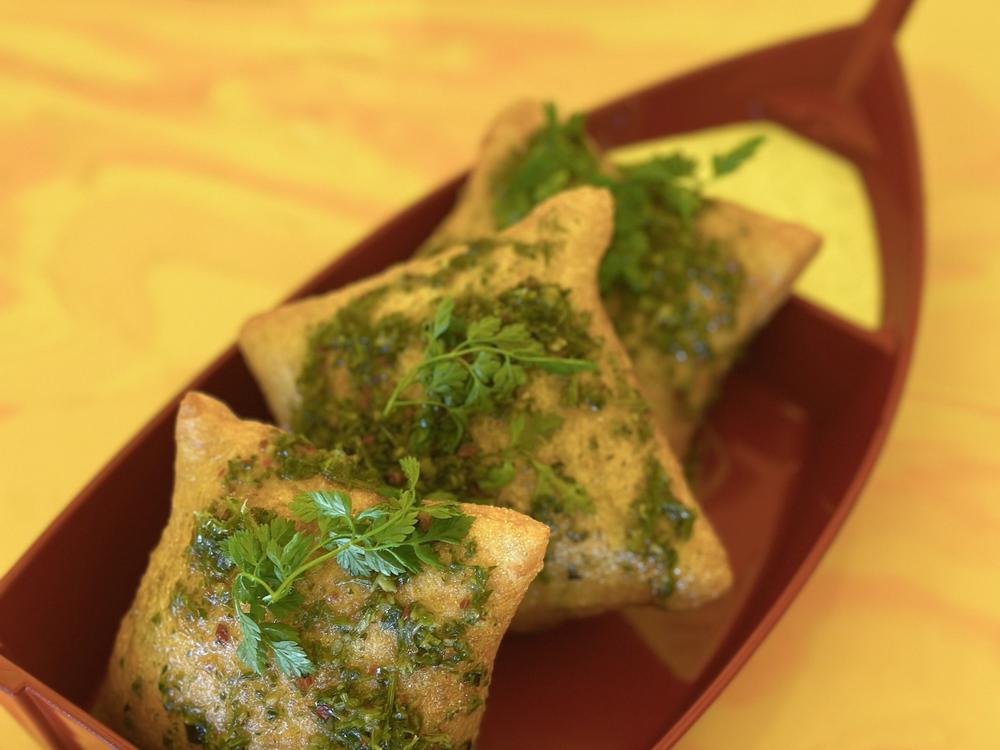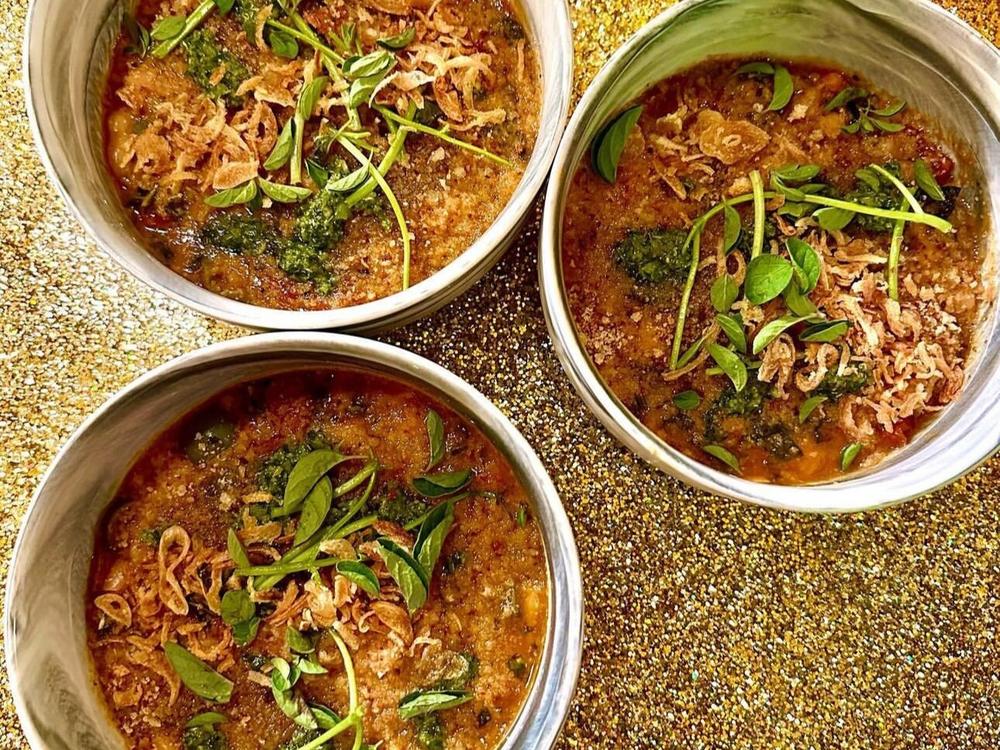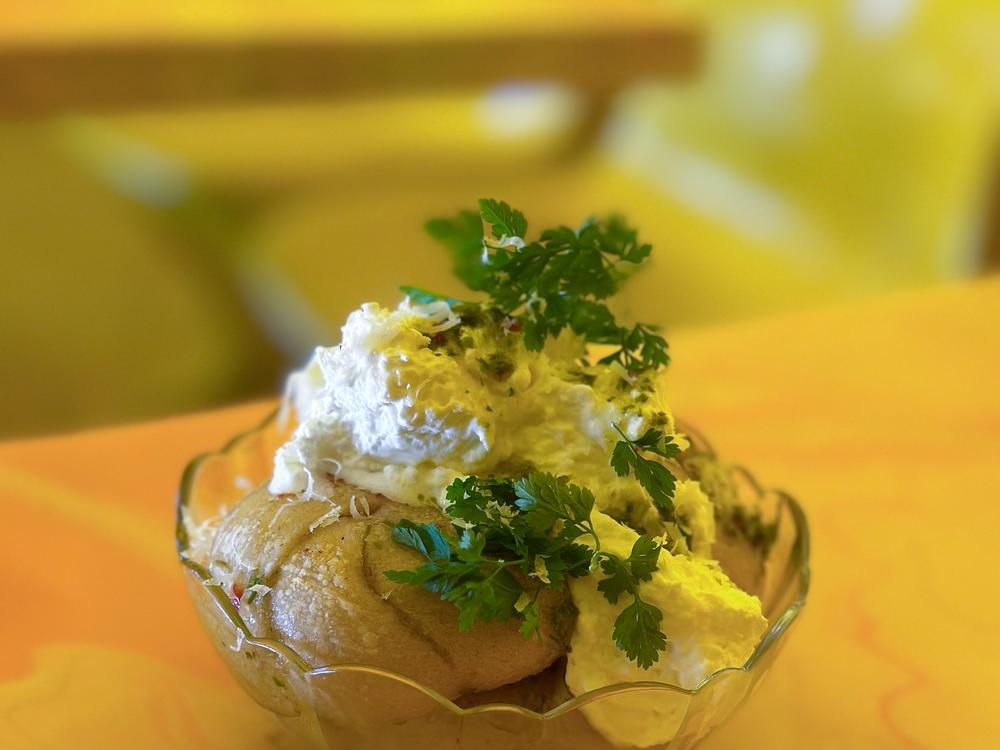Section Branding
Header Content
One restaurant has a way to fight food waste: Making food out of 'trash'
Primary Content
Climate change is affecting our food, and our food is affecting the climate. NPR is dedicating a week to stories and conversations about the search for solutions.
No one, except maybe Sesame Street’s Oscar the Grouch, wants to consume food that most people think of as garbage.
But if everyone ate fare that might otherwise be thrown out — say, weird animal parts or milk that’s close to its sell-by date — we’d significantly reduce the impacts of human-caused climate change.
"Addressing food waste turns out to be one of the biggest climate solutions of them all," said climate scientist Jonathan Foley, who serves as executive director of the climate solutions think tank Project Drawdown.
According to the food waste reduction nonprofit ReFED, 38% of the U.S. food supply goes uneaten.
All of the processes involved in making food, from clearing land and raising cattle to packaging and cooking ingredients, contribute to one-third of the world’s planet-warming pollution. The food waste that ends up rotting in landfills is particularly problematic.
"It causes methane to go into the atmosphere as well, and that's a really potent greenhouse gas," Foley said.
Methane traps more heat than carbon dioxide, which causes global warming. An estimated 60% of methane emissions are human-caused and come largely from agriculture, fossil fuels and food waste decomposing in landfills.
Restaurants are in an optimal position to help solve this problem.
According to research from the U.S. Department of Agriculture, people are spending more on eating out in this country than they are at home, and the restaurant industry was responsible for almost 10 million tons of leftover food in 2022, according to 2022 data from ReFED.
Restaurants can make practical tweaks, like reducing or customizing portion sizes. "That’s a big one," said Roni Neff, an associate professor at the Johns Hopkins Bloomberg School of Public Health who studies food systems and waste. "Seventy percent of the food that's wasted in restaurants is happening after it's served to people — on their plates."
Neff said restaurants can also streamline their ordering processes so surplus food isn’t sitting around. And then there are the chefs.
"They can help to shape people's views, expand our ideas of what's good food. And they can also shift behaviors in more subtle ways," he said.
That's where restaurants like Shuggie's Trash Pie come in.
Founded by chef David Murphy and his partner, Kayla Abe, in 2022, the San Francisco “climate solutions restaurant” works to get diners comfortable with imperfect ingredients usually discarded by the food system. According to Abe, Shuggie's has saved 41,000 pounds of food waste from the trash can in the roughly 2 1/2 years since it opened.
"Our big goal is to change the way America's eating," said Abe. "And bring the idea to the mainstream that eating trash is cool."
Like a few other sustainability-focused restaurants and chains in the U.S. (e.g. Emmer & Rye Hospitality Group in Austin and San Antonio, Texas, and Lighthouse in Brooklyn, New York) Shuggie's sources food that local producers cannot sell because there's a surplus, it looks irregular, or it's past its prime.
"We do not dumpster dive," said Murphy. "That is not something that we do."
Instead, Murphy and Abe have built strong relationships with local produce farmers, as well as fish and meat distributors.
"To look at the ugly food or the imperfect food, that it doesn't have to be the best of everything, is a relatively new way for people to look at their food," said Jordan Bow, the founder of the distributor Royal Hawaiian Seafood, and Shuggie's main seafood source for oft-discarded fish parts like halibut cheeks and various types of bycatch. "I'm counting on the chefs to be creative and not just do what everybody else does."
It’s going to take many more restaurants doing this work, as well as a broader cultural change among customers, to really make a dent in the massive food waste problem. That’s true both for eating out and eating at home. And if that shift happens, it could mean less food waste in landfills and less planet-warming pollution, which makes reducing food waste a huge climate solution.
There are simple ways to use leftover food in your refrigerator. To help you get started, NPR asked Shuggie's chef Murphy to share some ideas. Below you’ll find three of his creative yet simple recipes that make use of commonly leftover items.
Carrot Top Chimichurri
Chef’s note: “This sauce is the base for so many of our dishes. For example, it gets incorporated into a pesto after we add cheese and nuts to it.”
Ingredients
2 cups carrot tops or beet tops, or wilting fridge greens
3 cloves garlic, minced
2 tablespoons vinegar (apple cider preferably)
1 cup extra virgin olive oil or grapeseed oil
1½ tablespoons chili flakes
salt, to taste
Method
In a blender, mix all the ingredients together on high for 30 seconds or until all the leaves have been incorporated well.
Season with salt.
So good you’ll want to use this chimi on everything!
Shuggie’s Dream Beans
Chef’s note: “Use this wholesome bean dish as a dumpster for all sorts of leftovers sitting in the fridge. I’ve added squid, octopus, numerous different veggies, tired greens, fennel … anything!”
Ingredients:
3 cups great northern beans, soaked, cooked in a flavorful vegetable stock. (You can sub with cannellini, gigante, or your favorite soup bean.)
½ cup chopped garlic
½ cup sundried tomatoes in oil, chopped
1 tin Spanish anchovies in oil
1 cup herb stems, chopped
4 cups tired greens (kale, collards, arugula, or any other thing left in the crisper), chopped into 1-inch pieces
1 stick dry cured Spanish chorizo, chopped into ⅛-inch cubes
4 quarts flavorful vegetable or chicken stock
3 tablespoons smoked paprika
1 teaspoon cayenne pepper
2 tablespoons black pepper
1 large yellow onion, medium dice
Method:
Cook beans until tender, strain.
In another pot with a bit of grapeseed oil in the pan, cook all veggies and chorizo, deglaze with stock, add dry spices, anchovy and sundried tomato.
Add salt to taste.
Ladle into bowls, top with croutons made from day old bread, and add carrot top chimi!
Ricotta Fluff
Chef’s note: “Throw this creamy topping on waffles, or insert it in place of mozzarella on your favorite pizza ... super sexy!”
Ingredients
1 gallon milk (close to or even past its expiration date!)
¼ cup white vinegar
2 cups heavy cream
Salt to taste
Honey or other sweetener of your choice
Method
Whip heavy cream to soft peaks.
Heat milk to a simmer over low heat.
Pour in vinegar, stir gently, then strain.
Let curds cool.
Fold in heavy cream and season with salt.
Slather the mixture on toasted bread with olive oil.
Sweeten to taste.
Audio and digital stories edited by Jennifer Vanasco and Sadie Babits. Audio story mixed by Isabella Gomez-Sarmiento.
